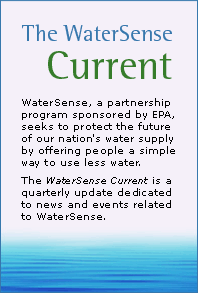The WaterSense Current Spring 2013
Issue XXVI, Spring 2013
Take Spring Cleaning Outdoors and Spruce Up Your Sprinkler
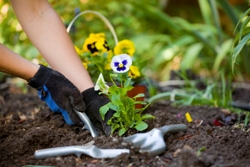
Spring is often a time for tackling those tough indoor chores. But you can also save water and money outdoors with a little sprinkler spruce–up this season.
If you have an irrigation system, chances are it has been dormant for the past several months. Take a few minutes to check your system for common problems, such as leaks or malfunctioning sprinkler heads. Just one broken sprinkler head could waste as much as 25,000 gallons of water and more than $90 over a six–month irrigation season.
Before you ramp up your watering this spring, spruce up your irrigation system by remembering four simple steps—inspect, connect, direct, and select:
- Inspect. Check your system for clogged, broken, or missing sprinkler heads. If you're not the do–it-yourself type, go with a pro—look for an irrigation professional certified through a WaterSense labeled program to help you maintain your system.
- Connect. Examine points where the sprinkler heads connect to pipes or hoses. If water pools in your landscape or you have large wet areas, you could have a leak in your system. A leak about as small as the tip of a ballpoint pen (1/32nd of an inch) can waste as much as 6,300 gallons of water per month.
- Direct. Are you watering the driveway, house, or sidewalk instead of your yard? Redirect sprinklers to apply water only to the landscape.
- Select. An improperly scheduled irrigation controller can waste a lot of water and money. Update your system's schedule with the seasons, or select a WaterSense labeled controller to take the guesswork out of scheduling.
Don't forget to add "sprinkler spruce–up" to your spring cleaning list this year. Learn more about maintaining a water–smart yard.
National Mayor's Challenge Takes its Water–Saving Show on the Road

This mobile learning exhibit drives home water
conservation awareness in major U.S. cities.
April is Earth Month, and the Wyland Foundation's second annual National Mayor's Challenge for Water Conservation makes participating as easy as pledging to reduce your water use. On April 1, the foundation launched a friendly competition among cities nationwide to see whose residents are the most "water–wise." Mayors from across the country will challenge their constituents to make free, online commitments during April to reduce their water use.
To raise awareness for this year's challenge, the Wyland Foundation embarked on a six–week, multi–city mobile educational tour in March. The centerpiece of the tour was the Wyland Clean Water Mobile Learning Experience, a 1,000–square–foot exhibit on wheels that uses interactive models—from an onboard running river to a 40–person theater with computer–controlled special effects—to explore our nation’s complex relationship with its water resources.
The tour is scheduled to stop at schools and community events in Houston and San Antonio, Texas; Atlanta, Georgia; New York, New York; Detroit, Michigan; Chicago, Illinois; Denver, Colorado; Phoenix and Tucson, Arizona; and southern California through mid–April.
If you take the pledge, there are a number of options for reducing water use at home, outdoors, and in your community:
- Fix that leaky faucet. Old and worn faucet washers and gaskets frequently cause leaks in faucets. Learn easy ways you can find and fix leaks.
- Take shorter showers and turn off the tap. Shower better, not shorter, with WaterSense labeled showerheads, which are independently certified to use 20 percent less water and perform as well or better than standard models.
- Wash only full loads of laundry and dishes. Learn how to save water during spring cleaning with fast and easy tips for around the home.
- Landscape with climate–appropriate plants. Find the best water–smart plants for your state with WaterSense's "What to Plant" resources, and browse our updated Water–Smart Landscape Photo Gallery for inspiration.
- Use sprinklers on minimal settings before 8:00 a.m. "Timing is everything" is just one of many tips to keep in mind when watering wisely. A WaterSense labeled irrigation controller that does the thinking and work for you is another option for those interested in a low–maintenance solution.
- Sweep instead of hose. Sweeping driveways, sidewalks, and steps is better than hosing them off. Pool owners can save additional water by using a cover when the pool is not in use to reduce water loss due to evaporation.
To learn more about or participate in the National Mayor's Challenge, visit the Wyland Foundation's "My Water Pledge" page![]() .
.
Water–Smart Photos Demonstrate the Green of the Crop
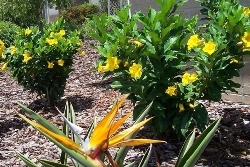
This garden in Winter Haven, Florida has needed
no supplemental watering since its establishment.
Looking for a little "greenspiration" when you head outside to your yard this spring? WaterSense has added nearly 100 new images to its Water–Smart Landscape Photo Gallery to showcase some of the most beautiful water–smart landscapes for spring. More than 60 home and business owners, landscape designers, and irrigation professionals entered WaterSense's recent contest to demonstrate how beautiful water–smart practices can be. WaterSense has organized some of the best water–smart submissions by geographic area and included descriptions and plant lists for each landscape.
The typical suburban lawn consumes 10,000 gallons of water above and beyond rainwater each year. Applying water-smart landscaping principles—such as planting low water–using and drought–tolerant plants, covering soil with mulch, and maintaining your irrigation system—can reduce outdoor water waste.
Help us pick the greenest of the crop! WaterSense shared the top water-efficient and aesthetically pleasing submissions on Facebook, and you can vote for your favorite and help us declare a contest winner. The photo earning the most votes will be featured in WaterSense outreach materials in 2013. To cast your vote for the best water–smart photo in our gallery, visit the EPA WaterSense Facebook page.
Once you cast your vote, check out the complete gallery of photo submissions and learn more landscaping tips to make your own yard water–smart and beautiful!
Three Restaurants Earn Their Stars for Reducing Water Use
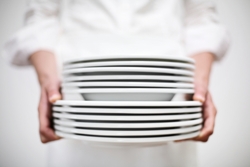
The following is the second in a series of case study highlights from EPA's WaterSense at Work: Best Management Practices for Commercial and Institutional Facilities.
Hospitality and food service accounts for approximately 15 percent of the total water use in U.S. commercial and institutional facilities. From dishwashers and spray valves to faucets and ice machines, restaurants across the country have begun to realize the benefits of water–efficient kitchen and restroom equipment, including energy savings.
Three such restaurants include: Uncommon Ground in Chicago, Illinois; The Grey Plume in Omaha, Nebraska; and Founding Farmers in Washington, D.C. All three facilities are Green Restaurant Association (GRA) Certified Green Restaurants® that have reduced their energy, pollution, chemical use, waste, and water.
To reduce water use, Uncommon Ground's owners first focused on the low–hanging fruit: water–efficient faucet aerators and pre–rinse spray valves. They replaced dishwashers and ice machines with ENERGY STAR® qualified models and purchased a low water–using steam kettle. The restaurant's management also installed an organic rooftop farm with a drip irrigation system and a rain barrel for rainwater collection to water planters and wash down patio areas. Following these water–efficient upgrades, Uncommon Ground became the first U.S. restaurant to obtain a four–star rating—the highest possible—from GRA.
The Grey Plume, located in a LEED® certified building, undertook several green initiatives as part of its focus on sustainable food sourcing and operations. In the kitchen, water–efficient faucet aerators and a high–efficiency pre–rinse spray valve were installed in the sinks. Both the ice machine and dishwasher are ENERGY STAR qualified, each with water–efficient components. Instead of using a garbage disposal that requires water, the restaurant composts its food waste. These efforts helped The Grey Plume earn GRA's Greenest Restaurant in America distinction in both 2010 and 2012.
Founding Farmers' Washington, D.C., restaurant is located in a LEED certified building and includes: high–efficiency pre–rinse spray valves; ENERGY STAR qualified dishwashers and steam cookers; and water–efficient faucet aerators and dipper wells. These features, along with a focus on continuous improvement, enabled Founding Farmers to earn GRA's certification.
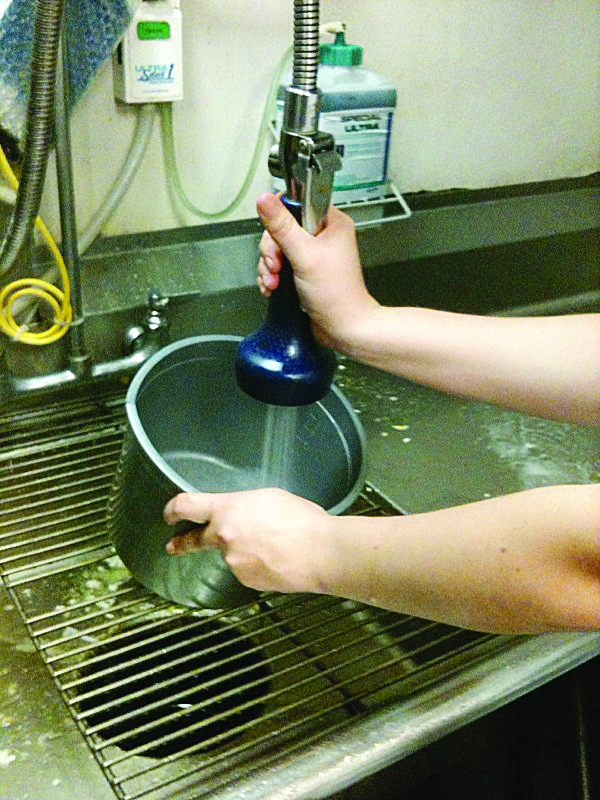
In January 2013, WaterSense released a draft specification to label pre–rinse spray valves, the spray nozzles that remove food residue from dishes and utensils prior to dishwasher sanitation. These devices can account for nearly one-third of the water used in the typical commercial kitchen—as much as 32 billion gallons of water per year nationwide! EPA estimates that replacing one commercial pre–rinse spray valve with a WaterSense labeled model will help commercial kitchens save more than 7,000 gallons of water per year.
Hungry to find a greener restaurant near you? Check out GRA's "Dine Green" restaurant search engine![]() . To learn more about the value of more efficient pre–rinse spray valves on the food service industry, read the WaterSense fact sheet.
. To learn more about the value of more efficient pre–rinse spray valves on the food service industry, read the WaterSense fact sheet.
Three–Time WaterSense Partners of the Year Agree "Wasting Water Is Wierd"

"Rip the Drip" sneaks up on
water–wasting consumers.
Third time is a charm; or is it just plain weird? Kohler Co. and Lowe's Companies, Inc. each earned their third WaterSense Partner of the Year award in 2012, after joining forces with WaterSense and other organizations on a public service announcement (PSA) campaign called "Wasting Water Is Weird"![]() .
.
The central campaign figure, a peculiar character known as "Rip the Drip," showed up in people's homes when they wasted water to remind them just how weird it is to use more water than you need. The campaign struck a positive, humorous tone and was splashed across a number of media platforms, including video PSAs for broadcast outlets, a website, social media, and outdoor and online advertising.
Lowe's continued to pursue partnerships and spread the water efficiency message by supporting the Arizona Municipal Water Users Association's inaugural Fix a Leak Week activities in 2011 and emphasizing the savings benefits of not wasting water. The retailer's 2011 Efficient Home marketing campaign promoted a "save energy, save water, save money" message, educated Lowe's customers about the WaterSense label, and helped them identify WaterSense labeled products at the point of sale. Sales associates were also trained to engage customers about the money—and water–saving benefits of WaterSense labeled products.
One of two 2012 Manufacturer Partners of the Year, Kohler, introduced 40 new WaterSense labeled toilet models in 2011. To put the water—and money–saving benefits of those WaterSense labeled products to work for a good cause, Kohler joined forces with Habitat for Humanity to install WaterSense labeled toilets, showerheads, and faucets in 550 Habitat homes in California and Texas.
Learn more about Kohler Co. and Lowe's Companies, Inc. and their efforts to promote WaterSense.
Water Droplets
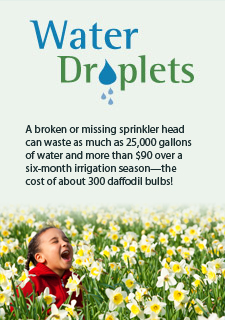
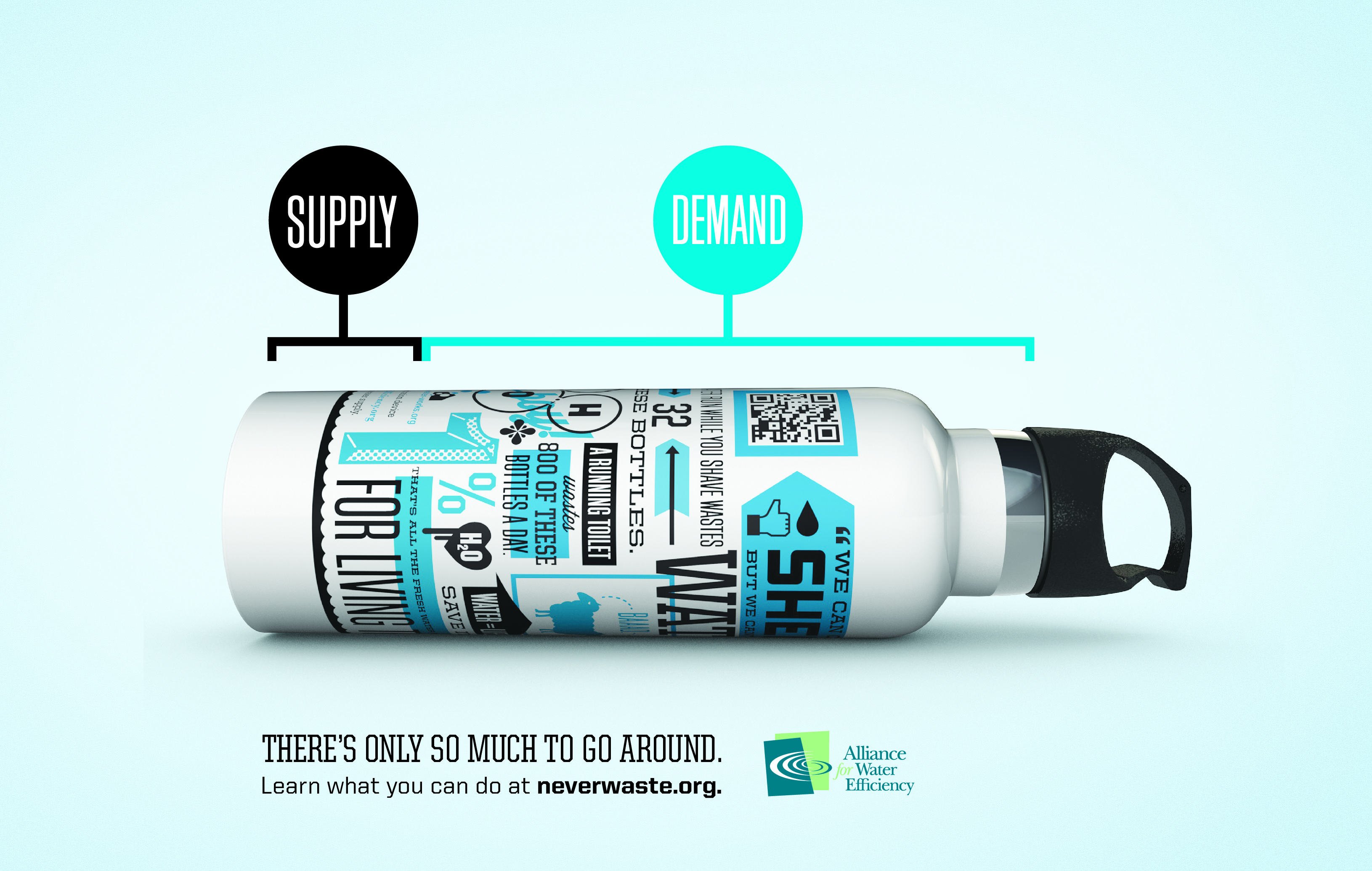
The Alliance for Water Efficiency (AWE) is challenging Americans to never waste by using an easy–to–identify symbol—a water bottle— to put unnecessary water use into perspective. For example, a running toilet wastes enough water to fill 800 20–ounce water bottles per day. A new website, www.NeverWaste.org![]() , offers a calculator, tips, and an opportunity to buy a bottle of your own to support AWE’s work helping water-stressed communities and businesses conserve water.
, offers a calculator, tips, and an opportunity to buy a bottle of your own to support AWE’s work helping water-stressed communities and businesses conserve water.



